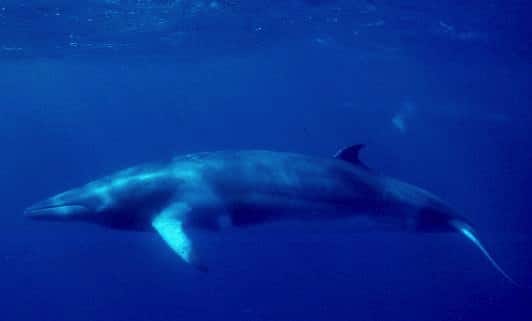Sperm Whale – Physeter macrocephalus
Description
The Sperm Whale is the largest of all toothed whales, and many people immediately think of the story of Moby Dick when they see one. It is well known for the grayish color that it features. The unique body design also offers a very large head with rows of sharp teeth. Full grown, one is about 67 feet in length and will weigh close to 56 tons. They only have one blowhole and a brain that weighs close to 20 pounds. This is the largest brain of any animal on Earth.
The flippers of the Sperm Whale are extremely large. They get their name from the fact that they produce Spermaceti Oil. This is produced in their heads.
Behavior
It holds the record for being able to dive deeper than any other whale in the world. It can go to the depths of 3,300 feet with ease. They form pods with very strong emotional bonds. It is very interesting to observe how they interact with each other and how they care for one another. They nurture their young and even care for those that have been injured or become ill.
Many people think that the Sperm Whale is very lazy. It often is seen engaging in a behavior called logging. This is a position where they remain just below the surface of the water. The tail will be completely submerged though. They simply float in this position and are very calm. They are often seen moving at a speed of about 3 miles per hour. However, they can move close to 25 miles per hour for short periods of time if necessary.
Diet/Feeding
The fact that the Sperm Whale can dive so deep helps tremendously when it comes to feeding. They are bottom feeders and easily access what is at the bottom of the waters. Common prey includes squid, fish, eels, and even an occasional octopus. Many Sperm Whales have been noted to have scars all over their heads. They are believed to be the result of squid that attack when they are going to be eaten. They can easily consume up to a ton of food daily.
They are often heard making sounds in the waters. It was once thought that these were only to communicate with each other. It is now believed that some of these sounds are actually used to attract prey to them in the murky waters where they don’t have good visibility.
Distribution
You will find the Sperm Whales in most oceans out there. They enjoy both the tropical and the cooler bodies of water.
Reproduction
Female Sperm Whales only have offspring every 5 years so with low numbers of them it is hard for them to increase. Other females will assist with the birth which is quite fascinating for animals to be a part of. These calves drink milk for up to two years which is twice as long as other baby whales.
The females are very protective of their young. The work together to make sure that they are well cared for to. One or two of the females will dive to bring food to the young while other females care for all of them. The young can’t dive as deeply for food due to their need to surface frequently for air. As it gets older that capacity will increase and they can get their own food.
Conservation
Since the Sperm Whale is endangered, there are plenty of conservation efforts out there for it. There are about 200,000 of them remaining at this time. However, it is easier now that the demand for oil from whales has dramatically diminished. Their numbers initially dropped though due to aggressive hunting by whalers.







